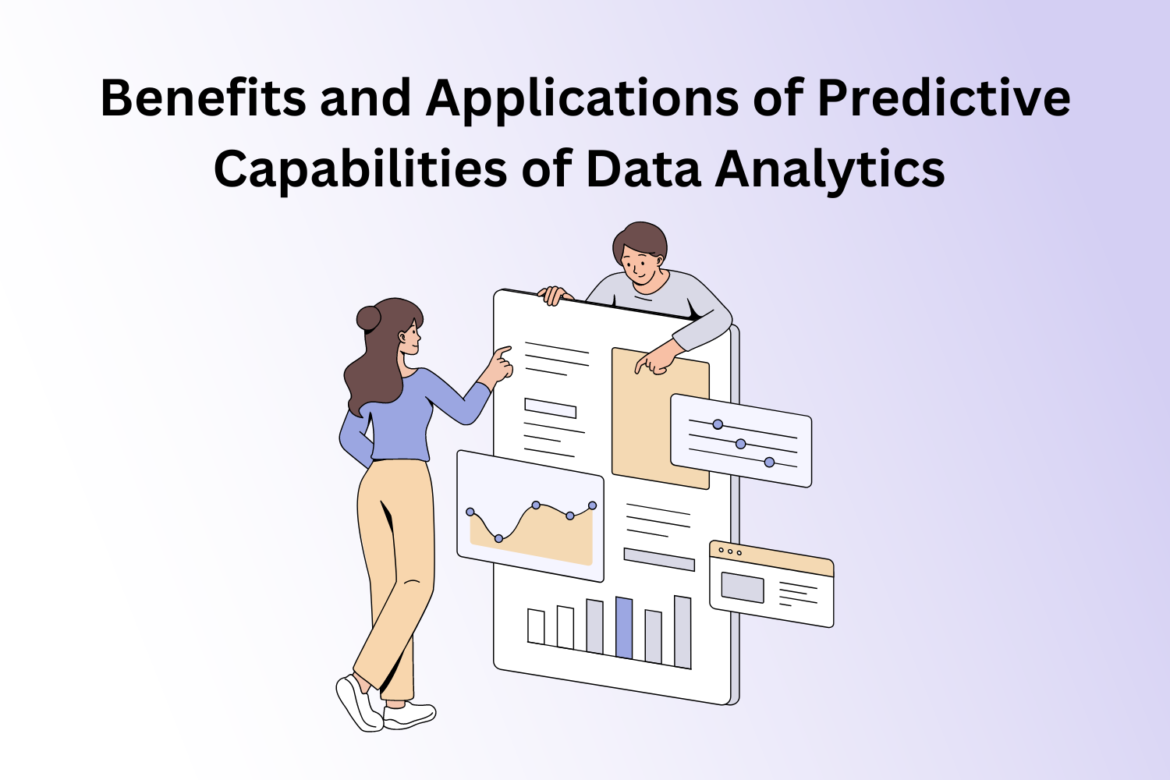Businesses increasingly utilise data analytics to gain insights, make informed decisions, and stay ahead of the competition. The foundation of data analytics is the ability to predict trends, estimate future results, and open doors to new opportunities. Predictive analysis of Data analytics is one of the most essential and valuable Benefits of Data Analytics. Investing in a Data Analytics Course helps equip professionals with the skills and knowledge to use predictive analytics effectively. This blog discusses the benefits of predictive analytics and its practical applications across various industries.
Table Of Contents
- Understanding the Benefits of Data Analytics
- Benefits of Predictive Analytics
- Practical Applications of Predictive Analytics
- Conclusion
Understanding the Benefits of Data Analytics
Data analytics analyses massive amounts of data for valuable patterns, correlations, and insights. Businesses can profit significantly from data analytics because of its predictive powers, allowing them to accurately foresee patterns and future consequences. Organisations can benefit from data analytics in three ways: improved decision-making, reduced risk, and the ability to seize new possibilities. Data analytics has revolutionary and far-reaching effects on companies of all sizes and sectors, from increasing operational efficiency to better-serving customers.
Benefits of Predictive Analytics
Anticipating Trends
With predictive analytics, businesses may foresee shifts in consumer preferences and purchasing habits, among other vital metrics, and proactively adjust their strategy accordingly. Firms can use complex algorithms and historical data to gain a competitive advantage and make accurate predictions.
Improving Decision-Making
Data analytics can greatly benefit organisations in marketing, finance, operations, and supply chain management, among other areas, because it enables them to make more informed decisions. Through data analysis and trend identification, businesses may improve resource allocation, process optimisation, and ROI.
Enhancing Customer Experience
Data analytics helps businesses learn about their customers’ wants and needs. This provides more tailored products and services and ultimately improves their customer service. With the help of predictive analytics, companies may better understand their customers’ habits, provide more targeted advertising, and increase consumer happiness and loyalty.
Mitigating Risks
Data analytics aids organisations in detecting fraudulent activity, evaluating credit risk, projecting market trends, and mitigating potential dangers before they occur. By analysing data and finding hazard trends, businesses can take preventative actions to lessen the effects of risks and safeguard assets.
Optimising Resource Allocation
By predicting demand, finding bottlenecks, and optimising processes, predictive analytics helps firms optimise resource allocation. Transportation businesses may optimise routes, allocate trucks efficiently, and minimise fuel costs using predictive analytics. Similarly, power providers can optimise distribution and production based on predicted energy use patterns, reducing waste and increasing overall efficiency.
Practical Applications of Predictive Analytics
Retail
Predictive analytics helps retailers optimise pricing, personalise marketing campaigns, and forecast product demand. Merchants can foresee what their customers want by looking at sales data from the past, patterns across time, and consumer demographics.
Finance
Credit risk, fraudulent activity, and market trend assessment are some financial applications of predictive analytics. By analysing client data, transaction histories, and market indications, financial institutions and insurers can improve their risk management and forecasting capabilities.
Healthcare
Predictive analytics help optimise patient outcomes, spending, and resource allocation in healthcare. By revealing trends and patterns in patient data, medical history, and treatment outcomes, healthcare organisations can enhance the quality and efficiency of patient care.
Manufacturing
The manufacturing industry uses predictive analytics to enhance product quality, optimise production schedules, and prevent equipment problems. Machine performance, sensor data, and maintenance records can help manufacturers spot issues before they happen, which means less downtime and more efficiency.
Human Resources
HR managers are making better use of predictive analytics to boost productivity, employee satisfaction, and the hiring process. Predictive analytics may help human resources departments find top talent, gauge retention rates, and evaluate development initiatives. By analysing employee data, predictive analytics can reveal turnover tendencies.
Conclusion
Businesses have a potent weapon in data analytics’ predictive powers, which they can use to foresee trends, predict results, and get an advantage in today’s data-driven world. Better judgements, less risk, and more opportunity can be yours with the help of machine learning, sophisticated algorithms, and data from the past. Data analytics has revolutionary and far-reaching effects on companies of all sizes and sectors, from increasing operational efficiency to better-serving customers. Success, expansion, and innovation in the digital era may be driven by organisations that invest in data analytics courses and provide their personnel with the knowledge and abilities to use predictive analytics properly.




